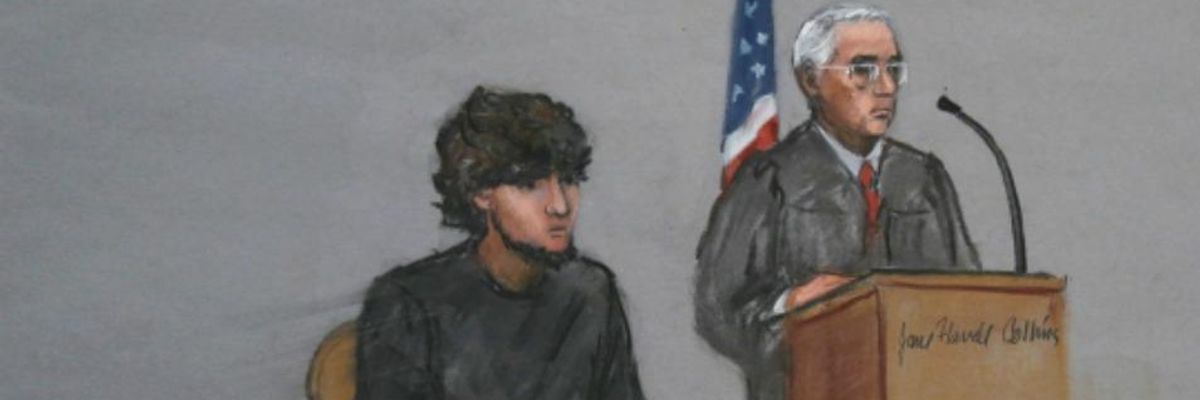On April 19, 2013, as Dzhokhar Tsarnaev lay bleeding from gunshot wounds in a suburban Boston backyard, he scrawled a note that contained the following message:
"The US Government is killing our innocent civilians but most of you already know that....I don't like killing innocent people it is forbidden in Islam but due to said [unintelligible] it is allowed...Stop killing our innocent people and we will stop."
This message mirrored comments Tsarnaev would later give to investigators, in which he cited grievances over American wars in Afghanistan and Iraq as his motivation for the 2013 bombing of the Boston Marathon.
In his trial, which begins today, more details are expected to emerge about how he went from a popular college student to an alleged homegrown terrorist.
Widely described as a "self-radicalized" terrorist, Tsarnaev now serves as a prime example of the type of individual targeted by Countering Violent Extremist (CVE) programs. Yet in fact, Tsarnaev's life trajectory leading up to the bombing does not resemble the "path to radicalization" identified in CVE frameworks -- raising questions about the capacity of these programs to intervene effectively to preempt terrorism.
"Typical signatures" in the path toward terrorism frequently invoked in CVE models include those featured in a 2007 NYPD study: giving up recreational drug use, wearing traditional Islamic clothing and associating primarily with like-minded individuals motivated by Salafi Islam. Tsarnaev is not reported to have exhibited any of those traits (though of course most who do will not themselves end up becoming terrorists).
CVE models do not usually even discuss political grievances, such as those Tsarnayev repeatedly cited as a motive for his acts.
Read the full article at The Intercept
